There's no smoke without fire in Bromo-land
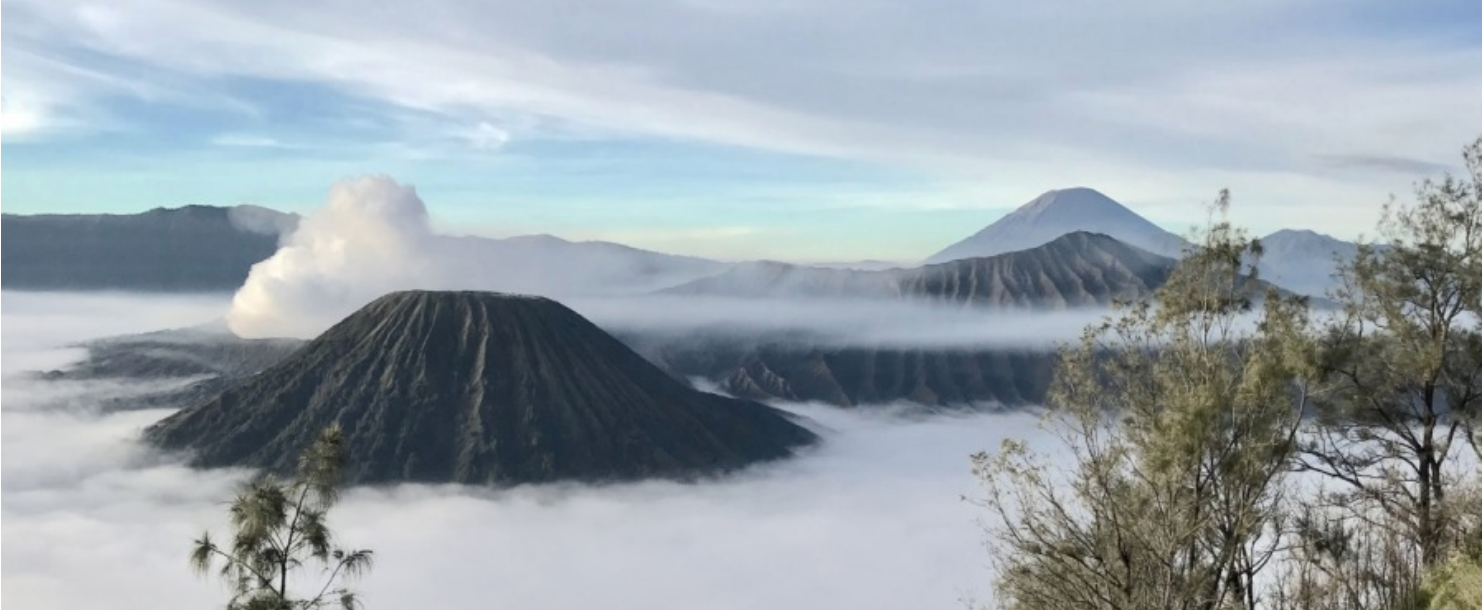
It was just after 5am on an April morning (2019), it was cold, and the sun was struggling to penetrate a band of cloud across the eastern horizon. We could already see from our crowded vantage point, however, that the landscape beneath was going to reveal a special treat, as a reward for our pre-dawn reveille and bone rattling ascent (by 'jeep antik') of the lush green slopes below and now behind us. As we stared across the massive 7km wide abyss that is the Tengger Caldera in East Java, the small remnant crater of Mt Bromo, near its centre, was spouting a localised but steady plume of steam behind its larger (but now dormant) sibbling, Mt Batok, as though heralding the start of a new day, and hence fulfilling the task of its namesake Brahma (Bromo in the Javanese language, ‘bahasa Java’), the Hindu creator god. The extensive floor of the Tengger Caldera, beneath the eerily protruding tops of Batok, Bromo and the other volcanos within this post-eruption calderic mass, was shrouded in a halo of low cloud, masking the sea of volcanic ash sand (lautan pasir) (https://en.wikipedia.org/wiki/Bromo_Tengger_Semeru_National_Park) to which we were to later descend.
We had arrived at our first goal (this vantage point on the slopes of Mt Penanjakan, which is sharply sliced where it coincides with the rim of the huge Tengger Caldera).
Flash back then some 10 days to the start of our journey which, after many months of planning and preparation, commenced with two plane rides from Brisbane via Bali, then onto Yogyakarta in Central Java, where my wife and I were to attend the Javanese wedding of our niece (see a later post on this). After expanding our party of travellers to 14 (all intrepid and unabashed, despite being mostly middle-aged), we set off from Yogya on a comfortable four and a half hour train ride to Surabaya. Of course there's nothing like an onboard snack to lift the spirits.
Surabaya was our staging post for a couple of days while we explored its museums and restaurants and tripped across the mighty Suramadu Bridge to visit the carved limestone caves of Goa Pote on Madura Island. But then we were off, by hired bus and driver, eastward to Probolinggo. After a brief stop for lunch we headed inland and southwards, climbing out of the coastal plain towards Bromo. Our stopover for the night would be 'Rumah Villa Bromo' (aka 'Lusy Villa') where we would grab some rest before the planned ascent. The location had been chosen as being some 10km from the caldera edge, just in case, although there was adequate accommodation much closer.

Too excited to sleep heavily, we were awoken at 3am by the sound of our three local 'jeeps' arriving outside our villas, each driven by a young local Tenggerese male, whose driving skills proved to be not so much bound by road rules as tempered by an innate capability of performing instant risk assessment, passing slower 'jeeps' on hairpin bends, dodging ditches and drains by a whisker, all the while driven by a professional urgency (either in flat out mode or stop) to be in the first mob to reach the lookout point over the caldera rim on the slopes of Mt Penanjakan.
In casual chat, later that day, we found out that there are well over a thousand of these 'jeeps', most of which are in use as hired vehicles on a daily basis, thus accounting for the race up the hill in the wee small hours, as there is limited parking space within ‘cooee’ (https://en.wikipedia.org/wiki/Cooee) of the various 'warungs (https://www.wowshack.com/warung-special-part-indonesian-society/)' across the road from the lookout spot, where we had a basic but rapidly served breakfast ('serapan pagi') (https://www.google.com/search?rls=en&q=sarapan+pagi+in+indonesia&tbm=isch&source=univ&client=safari&sa=X&ved=2ahUKEwj7_47M-5DiAhVNOisKHQ_QBbQQsAR6BAgJEAE&biw=1272&bih=628).

Of course we weren't disappointed when the sun eventually broke through to reveal the tops of the five remnant volcanoes, sitting like erosion fluted reminders of the explosive forces of Mother Nature in this small but active portion of the South-East Asian and Australasian Ring of Fire. Here's what we looked at in awe, as we gaped across the carpet of cloud towards the south (in between selfies and group hugs):
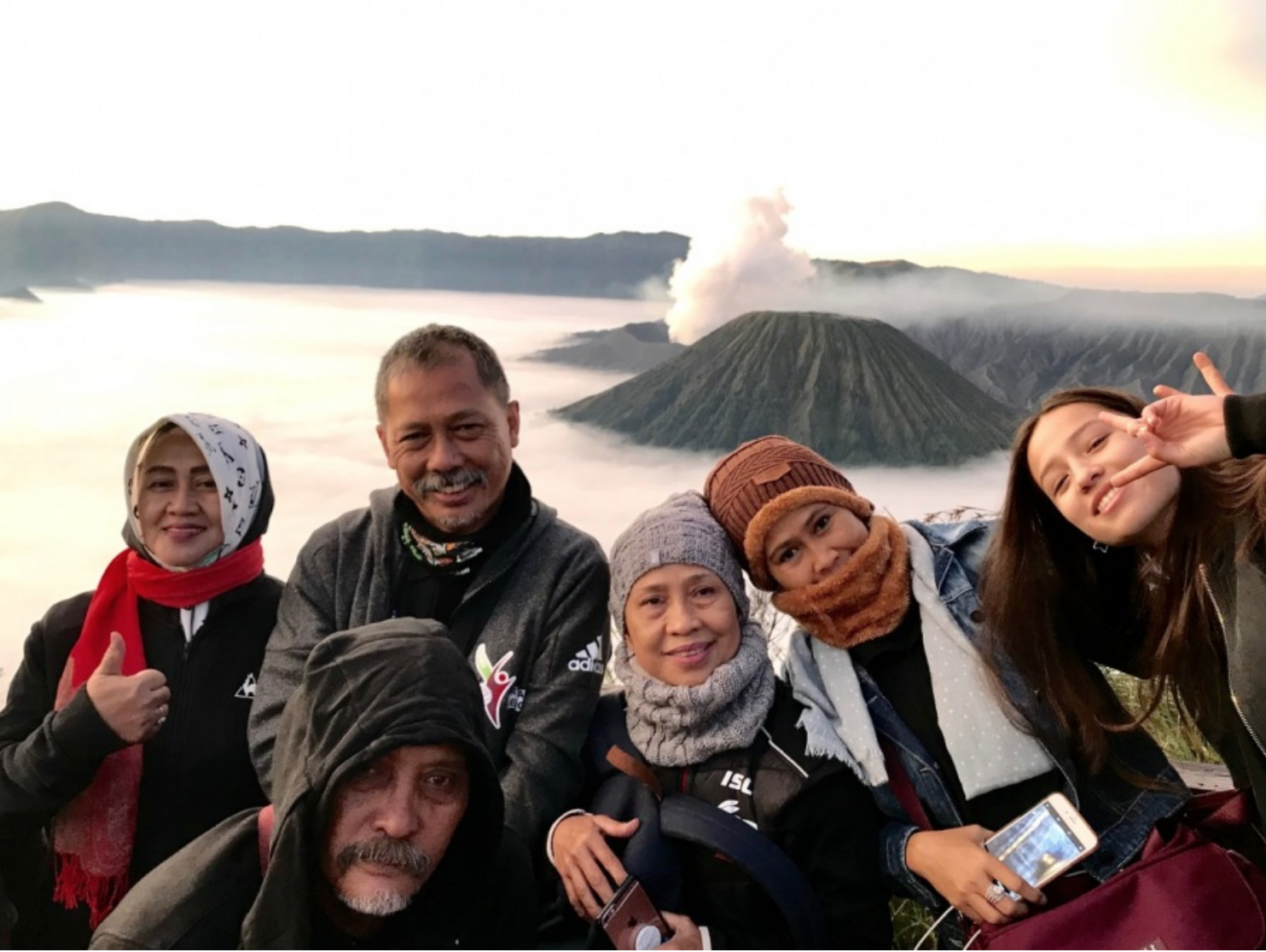
As for the layout of this massive caldera, I've labelled the main points of interest using Google Maps as a reference, in the figure below (note the 2km bar scale at the bottom):

To the rear and right of the title photo (and below), you can see Mt Semeru, Java's highest mountain, which looks deceptively close, but is in fact well outside the Tengger Caldera and some 19km south and slightly west of Bromo. While we were there at our viewing platform, a sudden puff of smoke erupted from Semeru's crater, amidst ‘oohs’ and 'ahs' from the thousands gathered around us, and then drifted off in the early morning breeze to disperse within a few minutes of its teasing appearance, again a signal of the unpredictability of this remarkable but actively volcanic region.
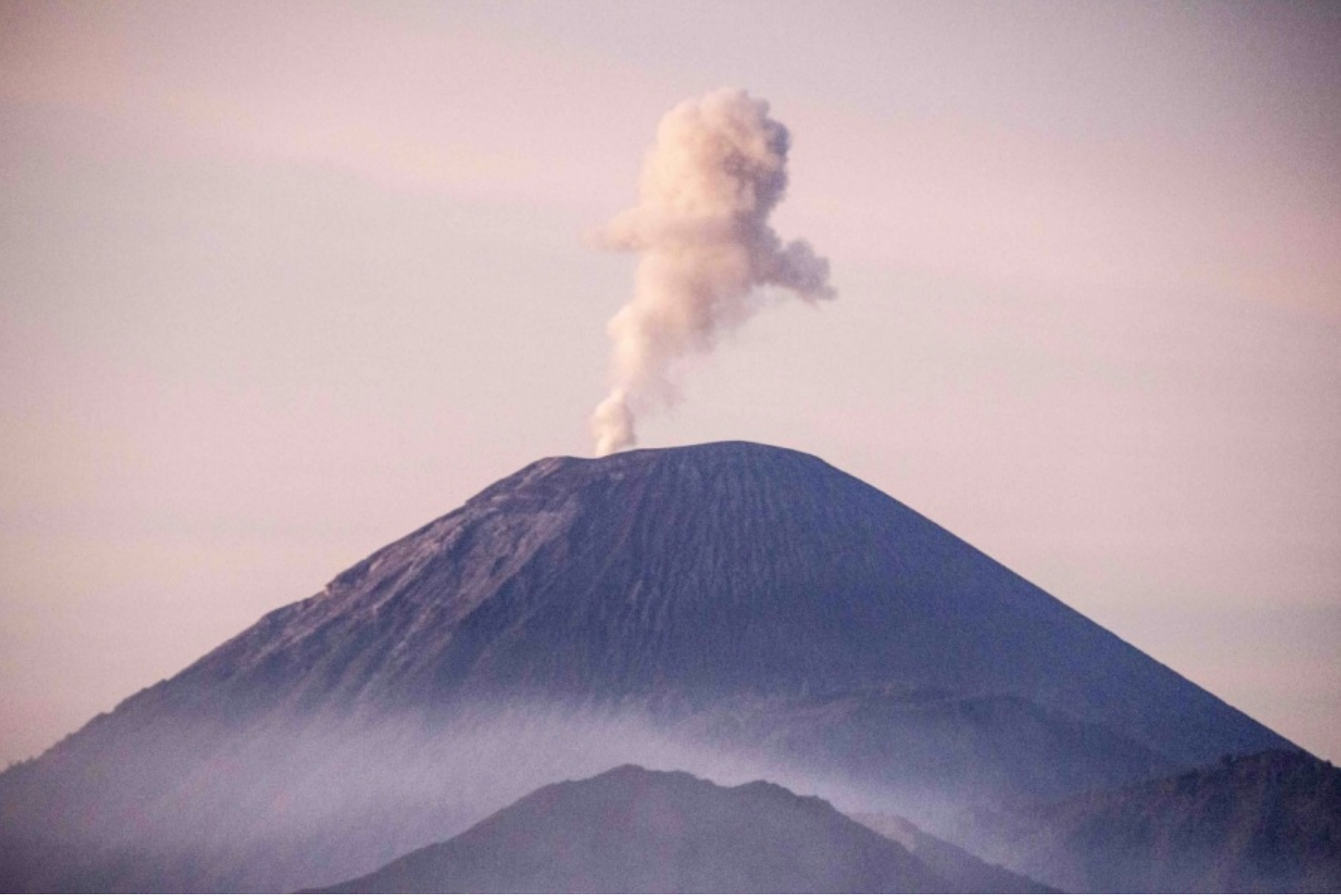
Then, all too soon, it was time to mount our 'jeeps' and descend the winding road down the inner face of the caldera, under the carpet of low cloud, to traverse the ‘sea of sand’ (well named, as the rolling motion of these robust but solidly suspended vehicles caused some nausea in a couple of the younger members of the group). We stopped at a parking spot (and photo opportunity) east of the northern slopes of Batok, where the more mechanically-minded of our brethren relished (now in post dawn daylight) these virtually antique classic Toyota Landcruiser ‘jeeps’. These classic machines were built back in the 1970s or 1980s, more for traversing difficult terrain rather than for comfort, but were obviously well serviced, freshly painted and with hardly a scratch or dent, despite (or perhaps because of?) the enthusiasm and fervour of their young drivers. My brother-in-law (below) is a particularly keen 'revhead' and was obviously impressed by these 'mobil antik' people carriers.


After disembarking from our four wheeled 'boats' across the sea of sand we commenced the final approach to Bromo, now a distance of some 800m, passing a small Hindu/Buddhist Temple (Pura Luthur Poten) on route. We had been forewarned of the ardour of the local Tenggerese, who were more than keen to hire out their ponies to assist in this final 'sea' crossing.

Certainly there were initial fears of the 'jeep' saddle soreness being compounded by equine saddle soreness and some uncertainty about the remaining distance, as the cloud was still, at that time, lingering overhead. After some vigorous bargaining, however, a deal was struck and many of our party took to the saddle for this small final trek.
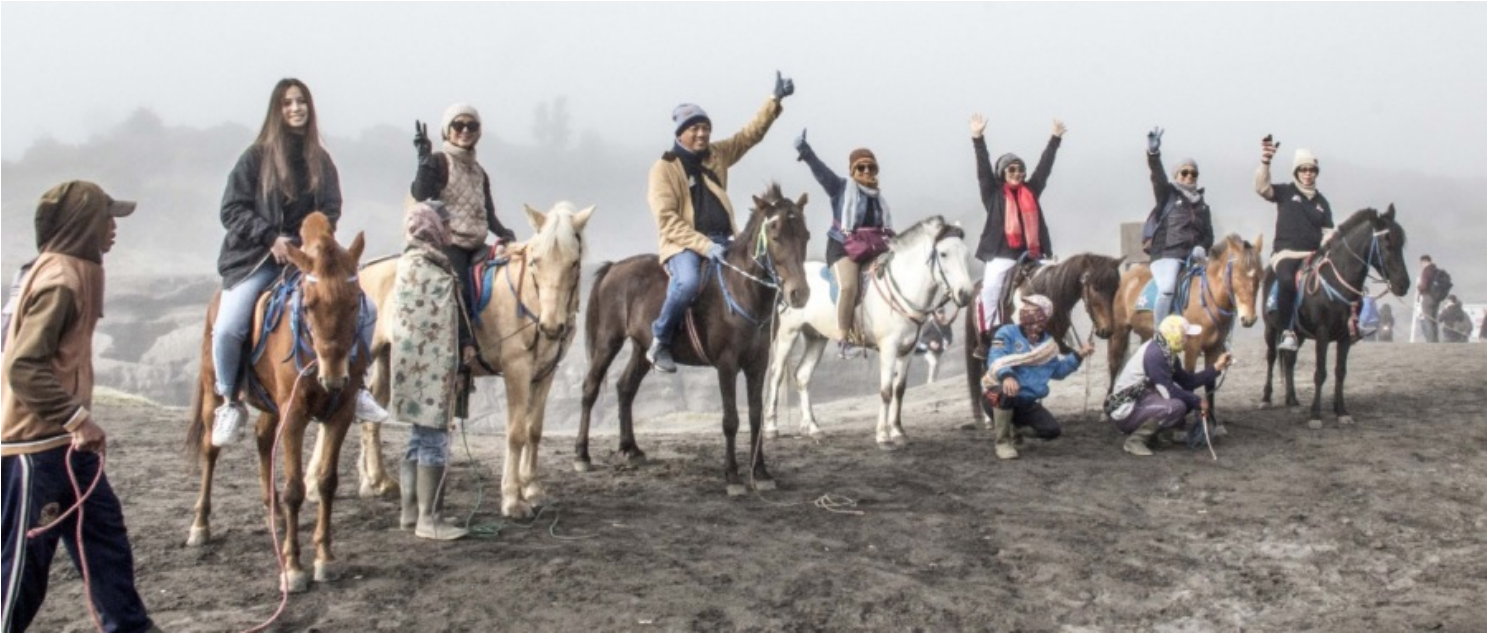
And then came the first and only disappointment of the day. As we approached the track ascending above the sandy ash floor of the caldera, the cloud started to lift and we could see the well documented moderately steep approach up the crater outer wall, with its final ascent via solidly constructed concrete steps and handrail, all teasingly close. A sign, however, blocked our way, informing us that the route up to the crater rim was closed.
I remember my instant disappointment as one of the horse-owner/guides explained that Bromo was presently angry and that we were not permitted to reach the crater rim as a safety precaution. I also remember at the time thinking that this must be bullshit, as there was nothing but a feint column of steam coming from inside the crater and no obvious signs of eruption, such as the historically well photographed plumes of dark ash and occasional earth tremors. I had researched this subject, somewhat, prior to embarking on the trip and hence remembered that an eruption had occurred, reportedly without apparent warning, back in 2004. Although not the latest eruption (the most recent having reportedly been in February 2019, only three months prior to our visit) this 2004 discharge of ash seemingly caught some tourists by surprise as they were ascending the well worn steps to the 800m diameter rim of Bromo's crater. This discharge reportedly resulted in two deaths and several more injuries from "direct impact of ballistics", presumably gravel or cobble sized volcanic ash fragments, discharged from the internal vent of the crater.
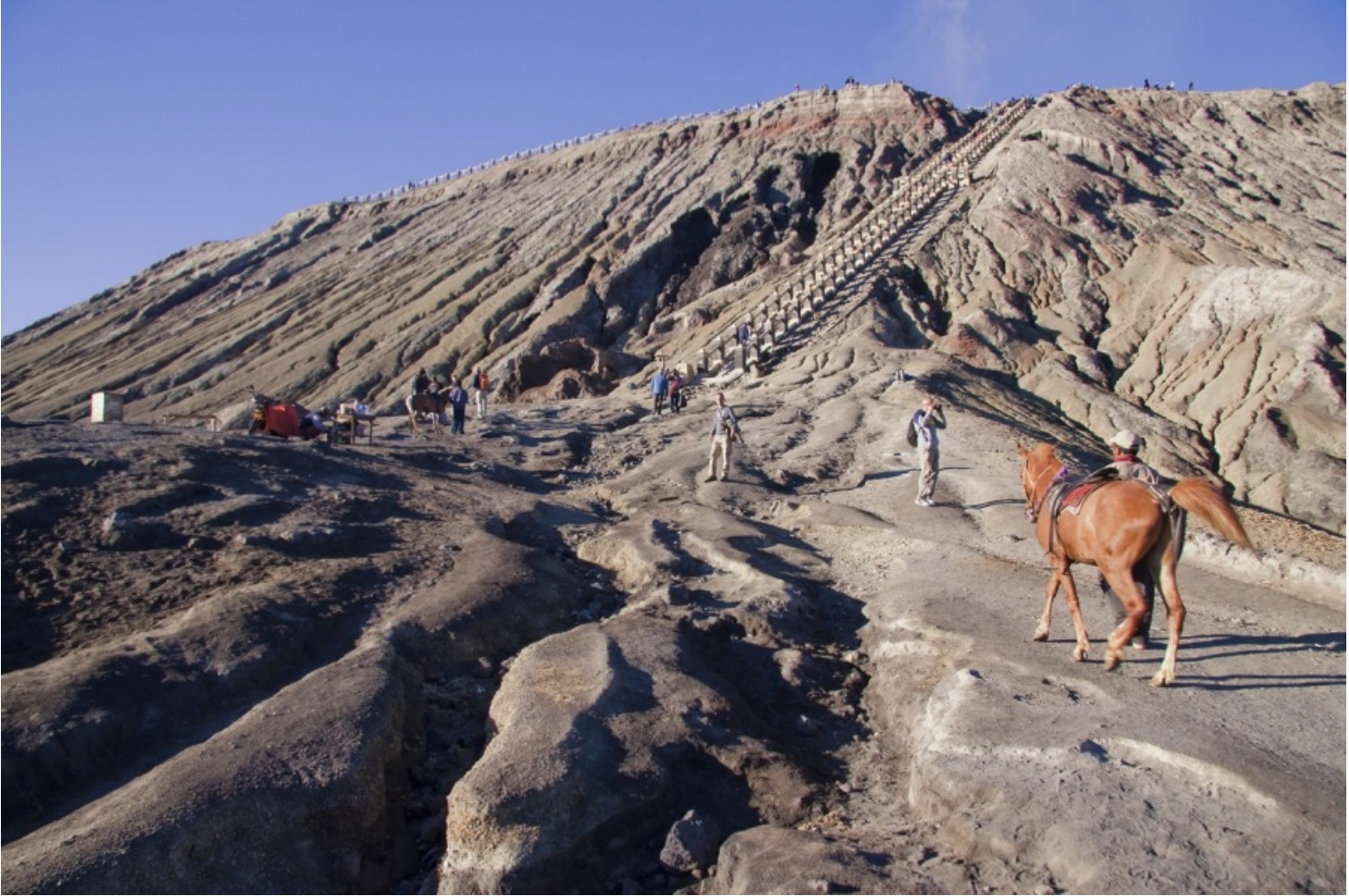
[Neither access nor weather conditions afforded me the opportunity to take a photo of the final ascent to the crater of Bromo, and so this above picture was copied from the internet]
Had I been given the freedom of choice, and armed with some knowledge gained from previous preparations for, ascents of, and approaches to volcanoes in Indonesia, I would have been keen to complete the teasingly last few steps of the journey, but, with the seed of doubt sown in my mind, coupled with the willingness of our group, along with the other overseas and domestic visitors, to avoid a public stouch, we backed off and commenced the return to our 'jeeps' either on foot or on horseback.
We had accomplished 99% of what we had hoped to do ... so near, but yet so far. Yet, we had been so fortunate, as this day's dawn had revealed the mystical carpet of cloud around the massive caldera in which Bromo sits, spouting the constant reminder of activity and pending eruption with a slow and steady emission of steam. Furthermore, the weather had been kind to us, as we were still in the tail end of the rainy season, and it is not uncommon for the hopes of early risers to be damped by morning rain, preventing the jaw dropping views we had experienced.
Later we were to find out, from other locals back at the parking area, that a ceremony was to be held the day following our visit (many of the local Tenggerese are seemingly practising Hindus) and that the crater rim had been closed, more as an appeasement to the crater god, ahead of this ceremony. This was at obvious odds with the above advice provided by our horse-owner/guide that the closure was a “safety precaution”. Indeed, it appears that the ascending path and stairway was open again two days after our visit. Personally, I would have been quite happy to agree not to enter the ascent to the crater rim on local religious and custom sensitive grounds, rather than a 'cry wolf' OHS fabrication, but I guess everyone is different and perhaps the safety warning approach was a more palatable one for many of the visitors to the region that particular day.
As the cloud started to lift and the sun shone through the remnant whispers of mist, we had a chance to look back in awe at the reason why so many come here, and we were now more fully aware of why many locals regularly donate offerings of "vegetables, fruit, livestock, flowers as well as money" into the crater, reportedly "in grateful thanks for an abundance of agricultural produce and livestock given to them".
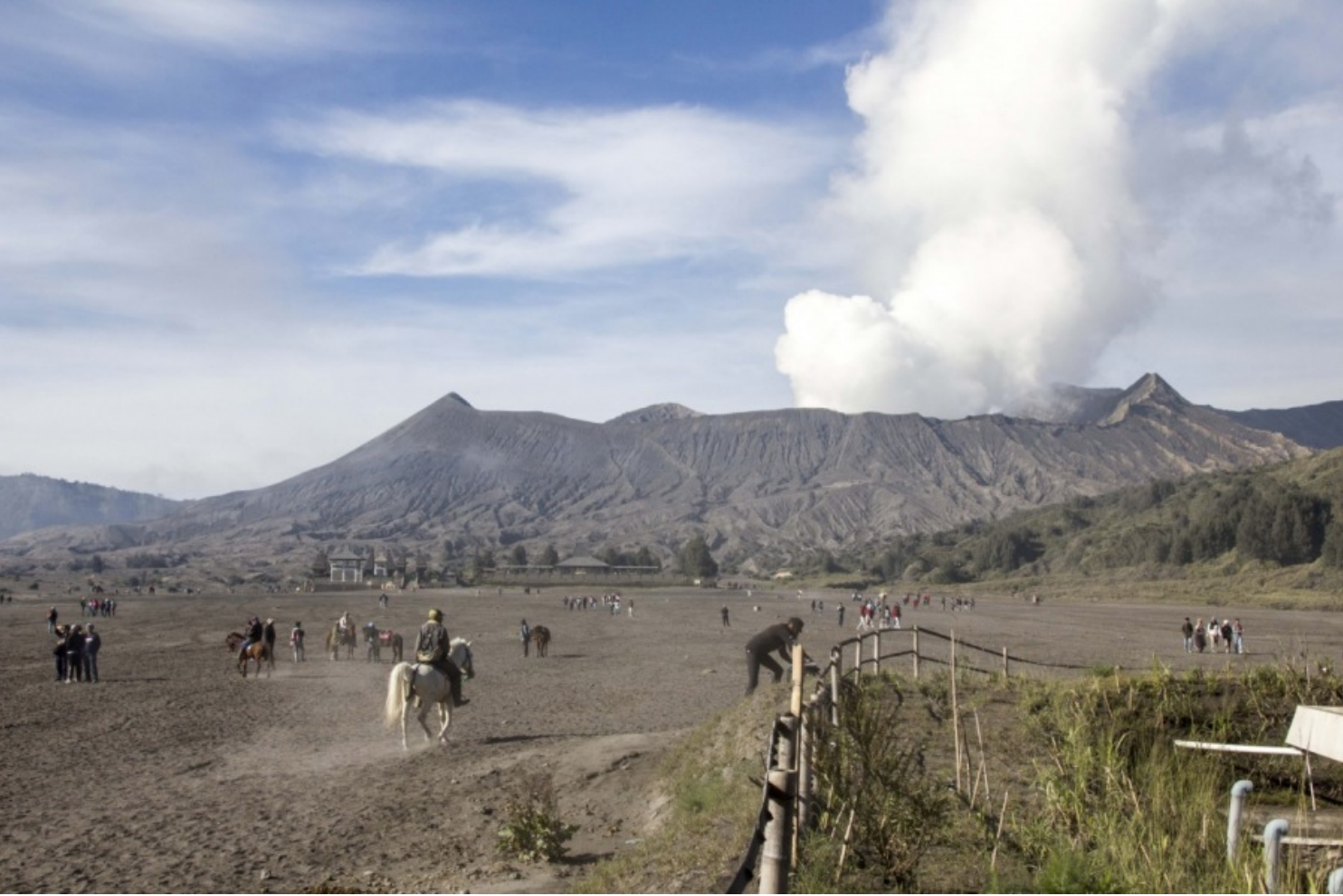
For more information on the fable behind these offerings and the annual ritual ceremony of Yadnya Kasada, currently held in June or July, look at the following link.
Yadnya Kasada Ritual Ceremony at Stunning Mount Bromo
This post was originally published in May 2019, on the former blog listing of beBee.com. A later update to the blogging facility, however, resulted in much of the original blog being lost. The missing wording has been reinstated with the republishing of this present post on 17 September 2022. Many thanks to @Javier CR and his IT staff for assistance in this matter.
....................<<..................>>...................

When not researching the weird or the wonderful, the comical or the cultured, the sinful or the serious, I chase my creative side, the results of which can be seen as selected photographs of my travels on my website at:
https://ken-boddie.squarespace.com
The author of the above, Ken Boddie, besides being a sometime poet and occasional writer, is an enthusiastic photographer, rarely leisure-travelling without his Canon, and loves to interact with other like-minded people with diverse interests.
Ken's three day work week (part time commitment) as a consulting engineer allows him to follow his photography interests, and to plan trips to an ever increasing list of countries and places of scenic beauty and cultural diversity.
Travelin Café beBee
Articles from Ken Boddie
View blog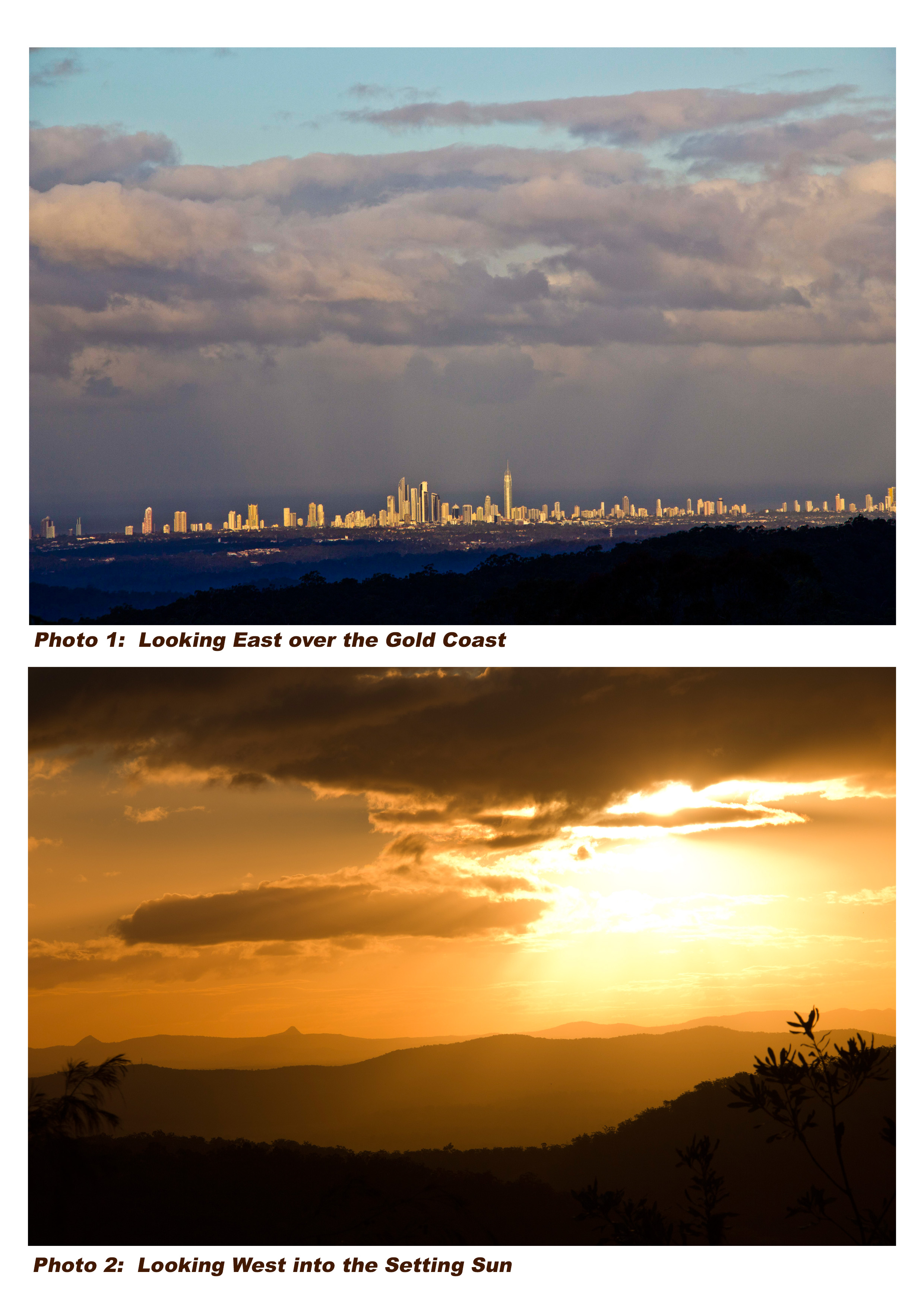
Introductory Geographic Lesson · I was tidying up some photographic files from a couple of years bac ...

Let's talk about how we manage reproduction, by which I mean the following processes: · Desiring to ...
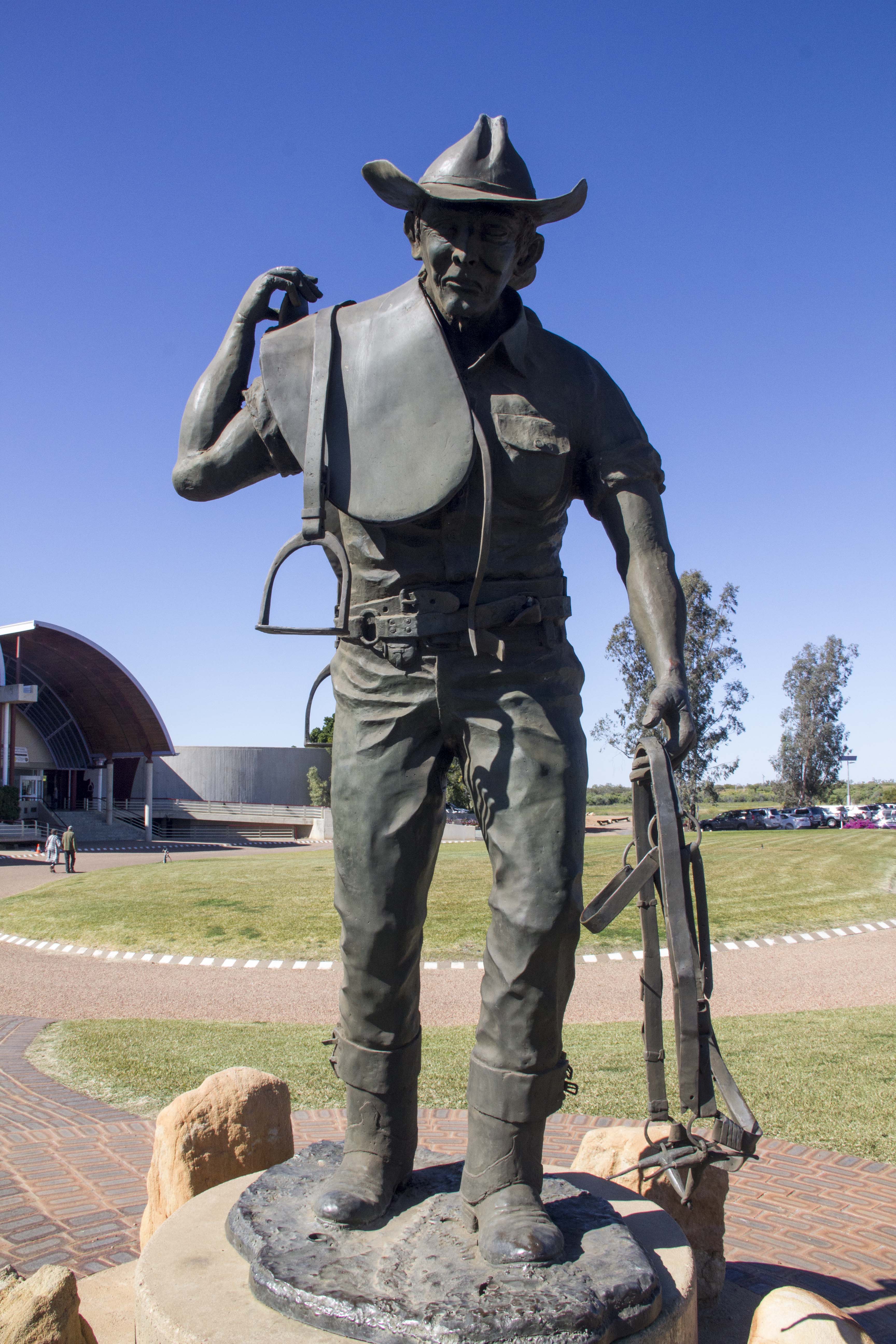
There's a part of Australia I've seen now and then, · Where the folks are resilient, both women and ...
Related professionals
You may be interested in these jobs
-
experienced wall
Found in: Talent AU C2 - 1 week ago
Beaumont Tiles Rochedale, Australia FreelanceTilers Plus is seeking experienced and professional Floor and Wall Tiler's to join an expanding company with continued growth. · Join the tile industry leader within the Wesfarmers/ Bunnings group · Hate doing invoicing/administration and scheduling? We do it for you · Variety of ...
-
Production Labourer
Found in: Talent AU C2 - 1 week ago
Protech Group Victoria, Australia Full timeGEELONG · Monday-Friday - 40hrs per week · $32/hr + OT · 2 positions - immediate starst · Protech is a leading, national recruitment specialist, partnering with a number of clients who are recognised as employers of choice within the industry. · We are looking for 2 reliable P ...
-
Mixed Billing GP Opportunity at Melton Medical
Found in: Talent AU C2 - 1 week ago
Forhealth Group Melton, Australia Full timeAbout the Centre · Strong patient demand, build a patient following quickly · Competitive and flexible contracts (lump sum or hourly rate offered) · Respiratory clinic option with hourly rate $200-$250 · As a general outline, you will have the following duties: · Provide comprehe ...



Comments
Ken Boddie
1 year ago #26
Ha, ha, @Pascal Derrien Let’s hope that you never grow up. 😂🤣😂
Pascal Derrien
1 year ago #25
I want to be Ken Boddie when I grow up :-)
Lisa Gallagher
1 year ago #24
The big worries are stomach turners and sleep burners. Time to open some wine 😄
Ken Boddie
1 year ago #23
I don’t have any petty things to worry about, Lisa … they’re all bloody great big ones! 😂🤣😂
Lisa Gallagher
1 year ago #22
You and your entire family amaze me. I'm glad your daughter, her partner and your grandson made it to the rim. Your spirit of adventure keeps you young, healthy and not worrying about the petty things in life. That inspires me.
Ken Boddie
1 year ago #21
Glad you enjoyed this post, Ralph. Yes the failure to make that final ascent, after months of planning the trip, was disappointing. I had some gratification, however, when my daughter, based in Melbourne, made the same trip a few weeks ago, with her partner and my grandson. This time they made it to the rim of Bromo and sent me photos.
Lisa Gallagher
1 year ago #20
Why thank you Javier! 🙂
Lisa Gallagher
1 year ago #19
haha, thanks for the laugh- needed that. I wish I had your wit! Not sure why I posted that.. I guess “Scottish roots” came to mind when I saw that photo. I was looking for something cute but thought you'd find that bit of history interesting. My cousin has wild Shetland ponies in her field next to her and said they can be a pain in the arse. 🙃
Greg Rolfe
1 year ago #18
Apparently, I missed this post back in 2019. Very glad to have caught it today!!
Greg Rolfe
1 year ago #17
@Ken Boddie. When I saw you had one of your photo journey posts out I had to stop and grab a cup of coffee (no tea on hand) and sit back to enjoy it. Thank you once again for permitting me to sit on your shoulder and bask in the unfolding story. I particularly appreciated your extra additions regarding the reasons the ascent was closed. Thanks again and have a truly remarkable day!!
Javier Cámara-Rica 🐝🇪🇸
1 year ago #16
great to see you visiting beBee again @Lisa Gallagher
Ken Boddie
1 year ago #15
Not many volcanoes in Lerwick, @Lisa Gallagher , but I understand there are a few Shetland ponies. They reportedly had one pony that could yodel. Its owner apparently organised regular concerts to show off the pony’s unique talent. They had to eventually be stopped, however, as the pony was a little hoarse. 😂🤣😂
Lisa Gallagher
1 year ago #14
My grandmother grew up here, Lerwick, Shetland Isles Scotland and thanks!
#13
Ken Boddie
1 year ago #13
Thanks, @Lisa Gallagher Nice to see you visiting beBee again.
Lisa Gallagher
1 year ago #12
Amazing! You sure are an adrenaline junkie but in a wonderful manner. The photos are stunning & what a trip, literally and rhetorically!
Javier Cámara-Rica 🐝🇪🇸
1 year ago #11
I think that this boat is faster than the lava and ash from the volcano, the question is how to get it close, of course . Finding a crazy captain is easier I think
. Finding a crazy captain is easier I think
Ken Boddie
1 year ago #10
Ha ha! Looks fast. Who’s at the wheel? Usain Boat? 😂🤣😂
Javier Cámara-Rica 🐝🇪🇸
1 year ago #9
Ken Boddie
1 year ago #8
Interesting conundrum, @Javier CR :
————————————-
Should you go or should you not?
Will these isles soon be too hot?
Magma boils and magma bubbles,
Will it lead to toil and troubles?
Should you take a chance and go?
I can’t help you, I don’t know.
But, if we should never risk it,
We will never taste the biscuit.
————————
If you do decide to go, however, Javier, I’d make sure that you have a really fast jet boat tied up on a handy jetty somewhere, ready to go. 😂🤣😂
Javier Cámara-Rica 🐝🇪🇸
1 year ago #7
#6 You are right @Ken Boddie
I think it's still not a good time to go 😅 . It seems that a hot spot under the Canary Islands feeds the volcano of La Palma and will create new islands. The injection of magma that shaped the Canary archipelago 20 million years ago continues to make La Palma grow while the older islands disappear little by little. The Canary Islands lie on the African continental plate, which 'floats' over the earth's mantle in an easterly direction at a speed similar to that at which fingernails grow. About 20 million years ago, the plate began to pass over the 'hot spot', which injected magma and began to create the first islands: Fuerteventura and Lanzarote. La Palma and El Hierro are the youngest islands, at just 1.8 and 1.2 million years old respectively. The hot spot is still under them and that is why they have active volcanoes that make them grow in extension and surface. Volcanologists believe that at the moment the magma sleeve is under La Palma. In 2011 it created a submarine volcano on the island of El Hierro that almost reached the surface. This is how all the islands were born, which are actually huge volcanoes. From the bottom of the sea, La Palma is about 6,500 meters high, almost as high as the highest peak of the Andes. Similarly, the oldest islands, Fuerteventura and Lanzarote, are disappearing through erosion and will eventually be submerged.
Ken Boddie
1 year ago #6
The caldera and surrounding slopes on La Palma seem to occupy most of the island. Good luck @Javier CR 😳
Javier Cámara-Rica 🐝🇪🇸
1 year ago #5
Sorry for the inconvenience and Thanks for your patience @Ken Boddie . I have not had the opportunity to see the caldera of a volcano and not even a volcano up close . I hope to soon be able to see the volcanoes of the Canary Islands up close , which have recently caused quite a bit of destruction.
Ken Boddie
1 year ago #4
These massive calderas, @Jerry Fletcher , often containing multiple vents or cones, are a feature of our distant geological past, world-wide, and doubtless had a massive effect on our climate and on life on this planet when they ‘popped’ (huge understatement). If you Google ‘caldera’ you'll see what I mean. We have one on our doorstep, south of Brisbane, spanning across South-East Queensland and into Northern NSW. Although it is thought to be dormant (I hope and pray) it has a diameter of about 100km (60 miles or so) and the rim still has a major influence on the views across the area, the vegetation and weather patterns.
Ken Boddie
1 year ago #3
Thanks, Paul. Half of the original post (published in May 2019) went AWOL, along with the original comments string, following the transition across to the new beBee last year, but the missing portions have now been successfully reinstated by @Javier CR and his staff. I have just a few minutes ago added some clarification to this effect, plus corrected some minor typos following the reinstatement. The original comments, however, some of which were classics, remain lost.
Jerry Fletcher
1 year ago #2
Ken, Great tale of intrepid adventuring! i live close by the Northern Pacific Ring of Fire. The only volcano close to active Mt. Saint Helen and it jsut rattles and rolls a little these days. Out in Eastern Oregon there is a viewpoint atop what was a cinder cone At the top you can see a caldera that stretches for miles. Not quite as adventurous as your trip but somehow I'm inclined to less of a thrill ride. And so it goes.
Paul Walters
1 year ago #1
Seems Bromo is the topic of the month. I like your post more !!